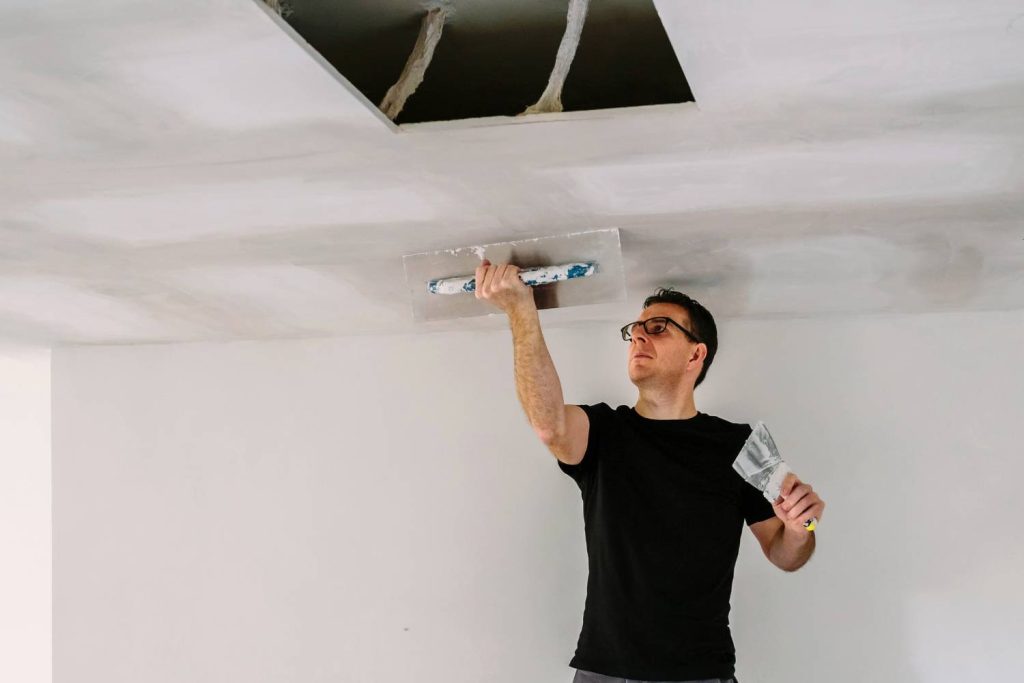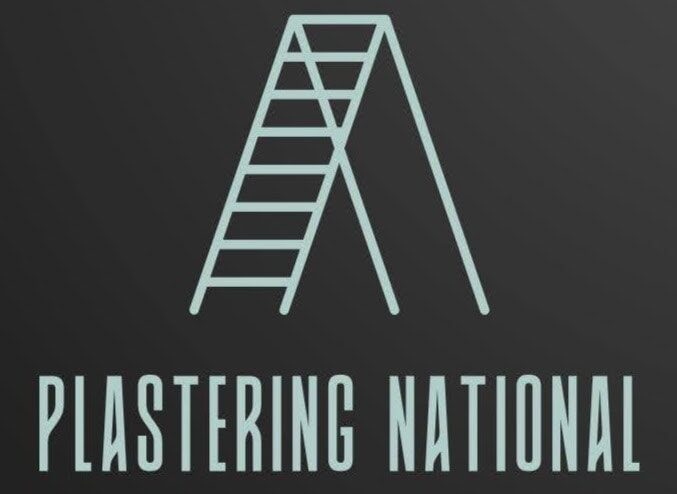Choosing the right plaster material for ceilings is crucial for both the aesthetics and durability of your home or commercial space. Among the top choices are gypsum plaster and cement plaster, which each offer distinct advantages and disadvantages. Whether you’re a homeowner, builder, or architect, understanding these materials will help you select the best plaster for ceiling applications based on your specific needs.
This guide will explore the difference between gypsum and cement plaster, their respective advantages of gypsum plaster and cement plaster ceiling benefits, and offer insights into how to choose the right plaster for your ceiling.
Let’s Get Straight To The Point
When choosing between gypsum plaster and cement plaster for your ceiling, it’s essential to consider their key differences. Gypsum plaster is ideal for dry, interior spaces due to its smooth finish, quick drying time, and eco-friendly properties.
However, it is sensitive to moisture and not suitable for wet areas. Cement plaster is more durable, moisture-resistant, and suitable for both indoor and outdoor applications, but it requires longer setting time and more labour.
If you’re looking for quick installation and a smooth finish, go for gypsum plaster. For wet environments or durable ceilings, cement plaster is the better option. Both offer fire-resistant properties, but gypsum plaster is more eco-friendly. Choose based on your project’s specific needs for moisture resistance, durability, and timeline.
The Core Differences Between Gypsum Plaster and Cement Plaster
When deciding on plaster types for ceiling finishes, two materials dominate the conversation: gypsum plaster and cement plaster. Both materials have unique qualities, and your choice will depend on the environment, durability needs, and budget considerations.
- Gypsum plaster for ceiling is ideal for dry, interior spaces, offering a smooth finish, quick installation, and added thermal and acoustic insulation properties. However, it is not suitable for areas exposed to moisture.
- Cement plaster for ceiling is more durable and resistant to moisture, making it suitable for both indoor and outdoor applications, including areas like kitchens, bathrooms, or even outdoor ceilings. While cement plaster installation takes longer and may require more effort, it provides long-lasting performance.
Gypsum Plaster for Ceiling: The Modern Solution for Interiors
Gypsum plaster for ceiling is an excellent choice for creating flawless, smooth ceiling finishes. This material, often referred to as plaster of Paris, has become increasingly popular due to its ease of application, aesthetic appeal, and eco-friendly plaster for ceilings qualities. Gypsum plaster is typically used in home ceilings and other interior spaces.
Why Choose Gypsum Plaster for Your Ceiling?
- Quick Setting Time
One of the standout benefits of gypsum plaster installation is the fast drying time. Unlike traditional plaster, which can take weeks to set, gypsum plaster typically dries within just three days, reducing project timelines significantly. - Smooth Finish
Gypsum plaster ceiling finishes offer a seamless, crack-free surface that requires no additional treatments before painting. This makes it easier to apply and more cost-effective than other materials. - Eco-Friendly
If sustainability is important to you, gypsum plaster is an excellent choice. It is produced using less energy than cement plaster and is fully recyclable, making it a more eco-friendly plaster for ceilings.
Key Benefits of Gypsum Plaster for Ceilings
- Lightweight
Gypsum plaster for ceiling is a lightweight material, which helps reduce the load on building structures. This is particularly beneficial in multi-storey buildings or constructions where minimising weight is a priority. - Fire-Resistant
One of the key advantages of gypsum plaster is its fire-resistant plaster for ceiling properties. The crystalline water within gypsum helps slow the spread of fire, making it a safer choice for residential and commercial properties. - Acoustic Insulation
Gypsum plaster enhances the acoustic performance of a room. It is a highly effective acoustic plaster for ceilings, providing sound insulation that is ideal for creating quiet, private spaces.
Limitations of Gypsum Plaster for Ceilings
Moisture Sensitivity
Gypsum plaster is not suitable for wet environments such as bathrooms or basements, as excess moisture can weaken the material. For such areas, cement plaster for ceiling may be the better option.
Higher Cost
While gypsum plaster installation is quick, the material itself is often more expensive than cement plaster. This may not fit within the budget of every project, particularly large-scale developments.

Cement Plaster for Ceiling: The Classic Choice for Durability
Cement plaster is one of the most widely used materials in construction due to its strength and durability. It is suitable for both interior and exterior surfaces, making it a versatile option for all types of ceiling applications, particularly in areas exposed to moisture.
Why Choose Cement Plaster for Your Ceiling?
- Durability
Cement plaster for ceiling creates a hard, weather-resistant surface that is ideal for outdoor applications or areas subject to high wear and tear. This makes it the best plaster for durable ceilings, providing a long-lasting, reliable finish. - Moisture Resistance
Cement plaster for ceiling excels in wet environments. It is highly resistant to moisture, making it the ideal choice for wet areas like kitchens, bathrooms, or exterior walls that are exposed to the elements. - Fire Resistance
Like gypsum plaster, cement plaster is also fire-resistant plaster for ceiling applications. This provides an additional safety measure in areas at risk of fire hazards.
Key Benefits of Cement Plaster for Ceilings
- Versatility
Cement plaster can be used in a wide variety of environments, both indoors and outdoors. Its versatility makes it an excellent option for plaster material for ceilings in different applications, including residential homes, commercial buildings, and industrial sites. - Textural Flexibility
Cement plaster installation allows for various finishes, whether smooth or textured. This flexibility gives you a wider range of design options for your ceiling. - Cost-Effective
Cement plaster is typically more affordable than gypsum plaster, especially if local sand supplies are readily available. However, installation costs may rise depending on the complexity of the required finish and the labour involved.
Limitations of Cement Plaster for Ceilings
Longer Setting Time
Unlike gypsum plaster, which sets quickly, cement plaster requires a longer curing time, often taking up to three weeks to fully set. This can extend your project timeline and increase costs due to delays.
Labour-Intensive
Cement plaster installation is more labour-intensive compared to gypsum plaster. Achieving a smooth finish requires skilled application, and improper techniques may lead to cracks or an uneven surface.
Environmental Impact
The production of Portland cement is energy-intensive, contributing to carbon emissions. This makes cement plaster less sustainable compared to gypsum plaster.
Choosing Plaster for Ceiling: How to Decide Between Gypsum and Cement Plaster

Choosing the right plaster for ceiling applications depends on several factors, including the environment, aesthetics, and timeline. Here’s a quick comparison to help you make an informed decision:
- For Dry, Interior Spaces: If you’re looking for a smooth, crack-free finish for a ceiling in a dry, interior space, gypsum plaster for ceiling is the best option. It provides a high-quality, smooth finish and is quick to install.
- For Wet or Exterior Ceilings: If you’re dealing with a high-moisture environment or an exterior ceiling, cement plaster for ceiling is a better choice. Its moisture resistance and durability make it ideal for such applications.
- For Quick Completion: Gypsum plaster is the best choice when you’re working on a tight schedule, as it sets much faster than cement plaster.
- For Durability: If you require a durable plaster for ceiling, cement plaster is the better choice due to its strength and ability to withstand harsh conditions, both indoors and outdoors.
- For Sustainable Construction: If sustainability is a priority, gypsum plaster is a more eco-friendly plaster for ceilings due to its lower energy consumption during production and recyclability.
Conclusion
Both gypsum plaster and cement plaster offer valuable benefits for different types of ceiling applications. Gypsum plaster is ideal for dry, interior spaces, offering a smooth finish, quick installation, and fire-resistant plaster for ceiling properties. Cement plaster, on the other hand, is perfect for areas exposed to moisture or harsh outdoor conditions, offering durability, moisture resistance, and fire-resistant plaster for ceiling properties.
By understanding the difference between gypsum and cement plaster, and considering factors like cost, durability, moisture resistance, and eco-friendly plaster for ceilings, you can select the best material for your ceiling project. Whether you need lightweight plaster for ceilings, acoustic plaster for ceilings, or a best plaster for durable ceilings, knowing the pros and cons of each will help you make an informed decision that suits your specific needs.
Frequently Asked Questions
What Are The Main Differences Between Gypsum And Cement Plaster?
The main differences lie in their composition, application, and finish. Gypsum plaster is made from gypsum, a soft sulphate mineral, and provides a smooth finish ideal for interior ceilings. It sets quickly and does not require curing, making it convenient for fast-paced projects. Cement plaster, on the other hand, is a mixture of Portland cement, sand, and water. It is more suitable for exterior and wet areas due to its moisture resistance and durability. Cement plaster requires water curing and offers a more robust surface.
Can Gypsum Plaster Be Used In Bathrooms And Kitchens?
Gypsum plaster is generally not recommended for bathrooms and kitchens due to its poor resistance to moisture and water. Exposure to water can cause gypsum plaster to deteriorate. For such areas, cement plaster or other water-resistant materials are more suitable due to their durability and resistance to moisture.
Is Cement Plaster More Durable Than Gypsum Plaster?
Cement plaster is generally considered more durable than gypsum plaster, especially in exterior applications or areas exposed to moisture. Cement plaster can withstand weather elements and is less prone to damage in such conditions, making it a better choice for outdoor surfaces or wet areas inside the home.
Why Would Someone Choose Gypsum Plaster Over Cement Plaster?
People might choose gypsum plaster over cement plaster for several reasons, including its quicker setting time, which speeds up construction. Gypsum plaster also requires no water curing, saving time and labour. Additionally, it provides a smoother, more uniform finish that is aesthetically pleasing and ideal for interior ceilings and walls where moisture is not a concern.
How Do The Costs Of Gypsum And Cement Plaster Compare?
The cost comparison between gypsum and cement plaster can vary depending on the region, availability of materials, and the specific products used. Generally, gypsum plaster is more expensive than cement plaster due to its manufacturing process and benefits, such as a smoother finish and faster setting time. However, the overall cost depends on the application technique, labour costs, and additional treatments required for the chosen plaster type.

